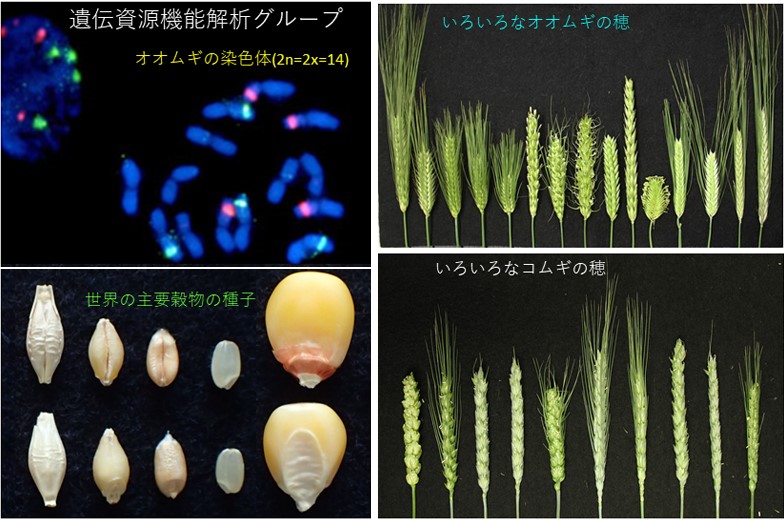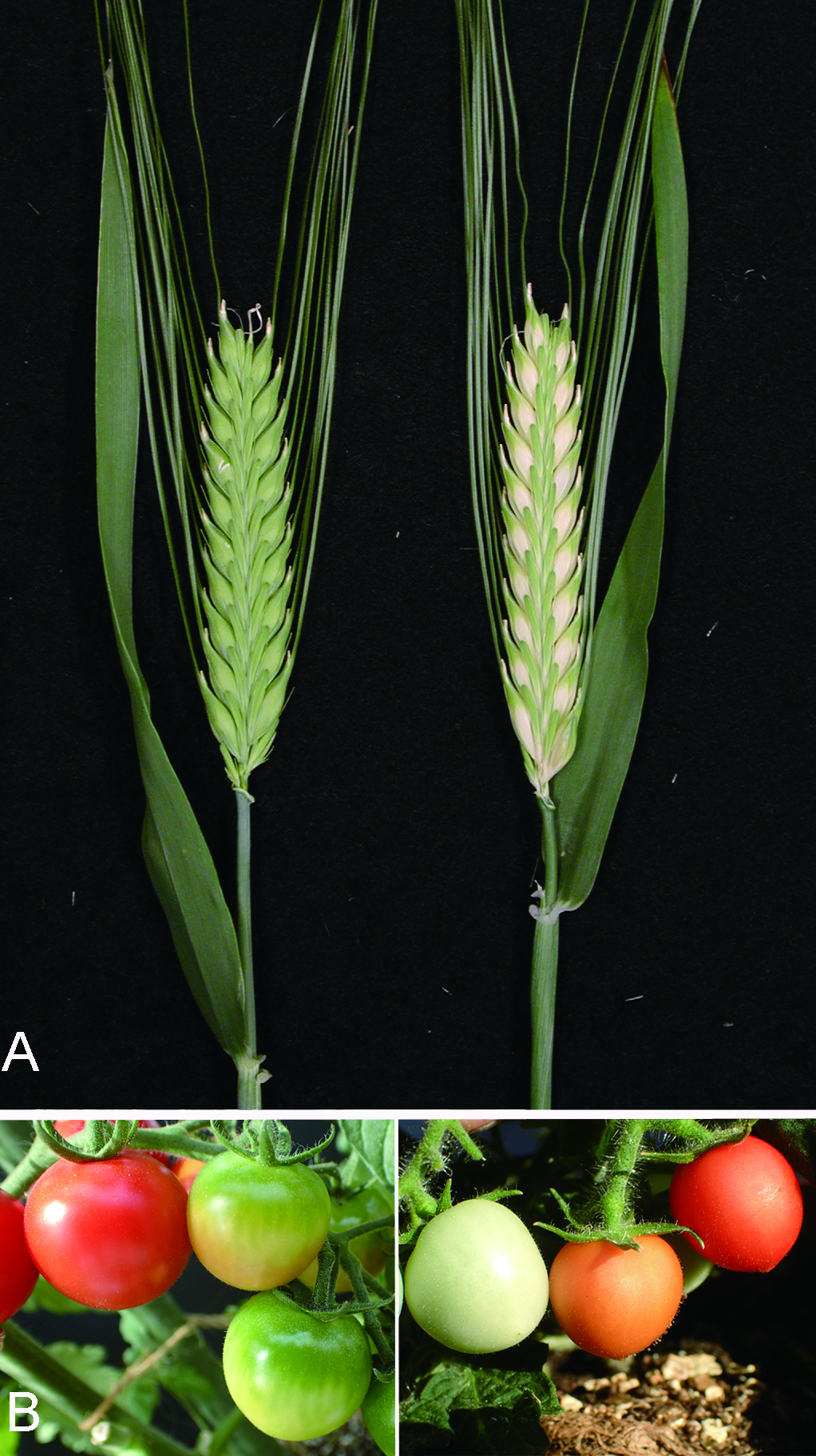Plant Functional Genomics

Barley, the fourth most important cereal crop in the world, typically has seeds with adhered hulls. This hulled seed trait is suitable for breweries. Some naked seed mutants with easily separable hulls were generated through spontaneous mutation. They are suitable for food usage. We have revealed that barley awns and spike hulls are photosynthetically active. Our current research specifically examines molecular identification and characterization of beneficial genes controlling (1) seed morphology and quality, including water soluble healthy dietary fiber, and (2) photosynthetic contribution of awns and hulls by using mutants. We seek application of our basic findings to practical breeding.
 |
|
|---|
We are interested in various barley mutants uniquely affecting seed quality.
A. Barley albino lemma 1 (alm1) mutants exhibit conspicuous albinism in spikes, where they lack chlorophyll pigments in the hulls except for in discrete areas connecting to the awns, which are otherwise green. We used genetic analyses and positional cloning to map the alm1 mutation to a gene locus encoding one of two GOLDEN2-LIKE transcription factors in barley (HvGLK2). The alm1.g mutation caused a 34% reduction in spike photosynthesis, which likely accounts for the 15.8% reduction in grain weight also observed in these plants. Further, expression analyses of HvGLK2 and its homologue HvGLK1 indicate distinct, non-redundant roles for HvGLK2, thus rendering it a useful genetic tool to further unravel the GLK transcriptional network in barley. The image shows 2 weeks old barley spikes of a wild-type (left) and alm1.g mutant (right) plant.
B. Orthologous tomato mutant exhibiting uniform ripening (u) phenotypes in fruits. Left is wild type, having dark green color at the bases of unripe fruits, which causes non-uniform ripening of fruits. Right is a u mutant gene found in Microtom dwarf experimental line. The u mutant shows uniformly pale green color of immature fruits and gets ripen uniformly. Consequently, the tomato u gene is economically useful for reducing harvest loss because it fosters easy identification of optimal maturity time. This study revealed unique molecular regulation of the barley GLK2 gene relative to many other crops including tomato.

